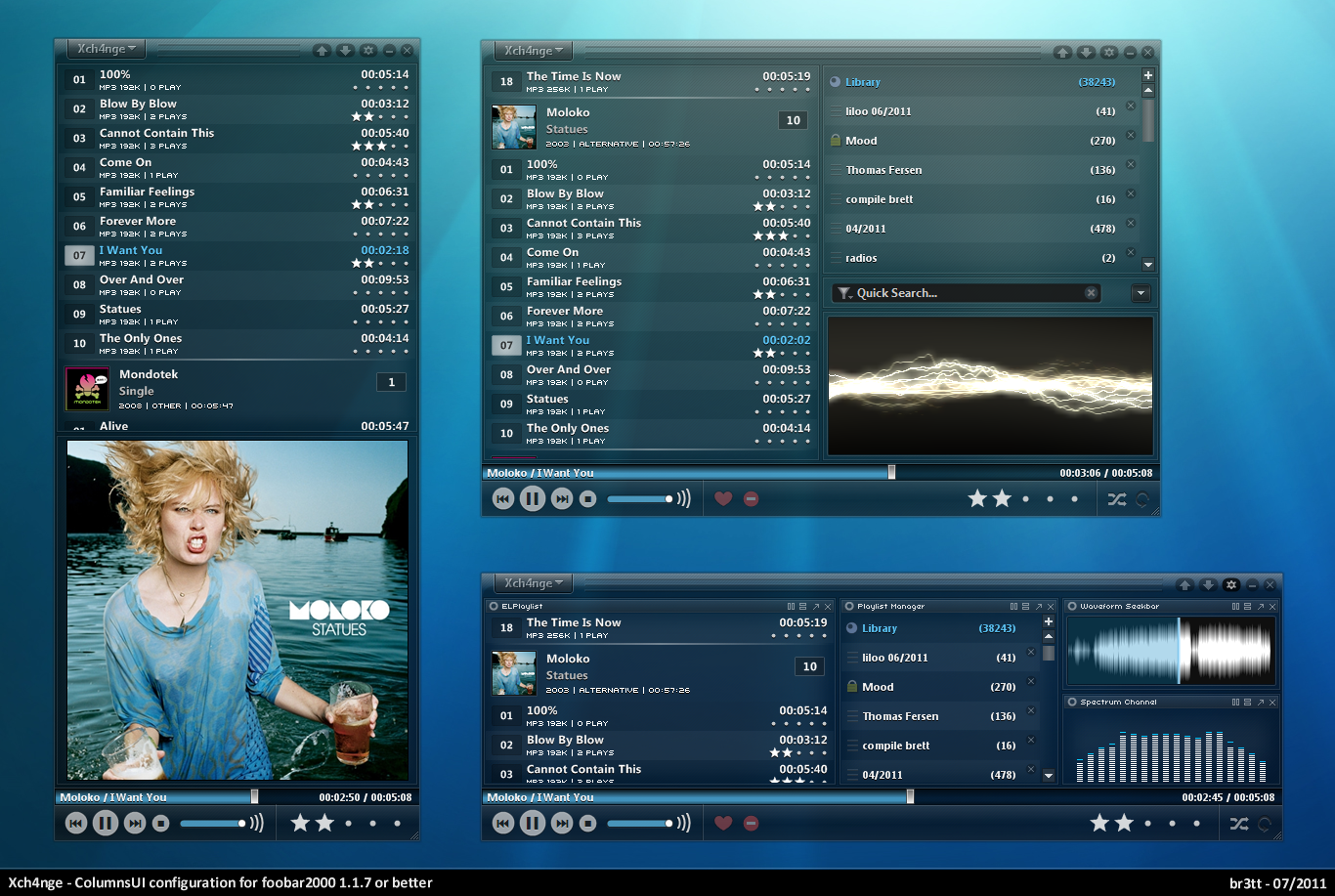
Replace the left-top element by "Selection information / Selection Properties" Add "Playlist renderers / Playlist View" in the left-middle area

Add "selection information / album art viewer" in the left-bottom area By right-clicking in its area, replace the element on the extreme left by a "Splitter (Top/Bottom)" Replace the element on the left by a "Split Left-Right" Remove the big element on the bottom-right by right clicking on a tab and "cut UI Element" You're done! Now put any text in the search bar above the facets, and their content updates in real-time. 4th facet: "Multiple columns" then "Title", then "Artist" 3rd facet: "Multiple columns" then "Album", then "Artist" Then Right click (and chose "Facet View") on the headers of the columns (facets) to chose the content : Add a fourth one with the option "Insert new facet" in the context menu of the element. Then, in the "Media Library Viewers", chose "Facets" Replace the two elements on the top-right by the facets by right-clicking on the vertical separator, and chosing "Replace UI Element.". But you just have to select your beloved playlist to see it again.Ī UI element is an element located in a frame. It will disappear if you select another playlist. The only thing is that it will not always displayed. Double click on a track of that playlist, and the playback will just follow its content. You can consider it's your current playlist. When you double click on an entry in the search panel, it adds it/enqueue it/play it in that playlist (Id. You can have a playlist with the following properties: That being said, you can create a similar thing.

To change the focused playlist, you can use for example a playlist manager, which will be a list of playlist, or tabs, or a playlist switcher (a dropdown). nlike Winamp, there is not "the Playlist", which is the current playlist showing the tracks played before and the next to be played, permanently displayed.Īctually, you should have a panel that displays the content of the focused playlist. You will always be able to add a feature with a component, or to configure something the way you want.


 0 kommentar(er)
0 kommentar(er)
